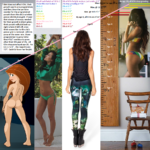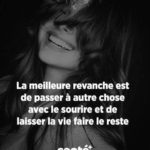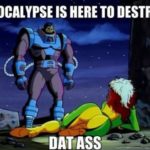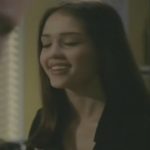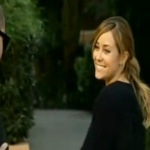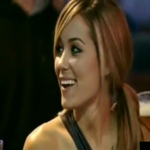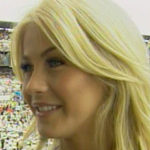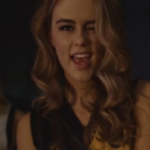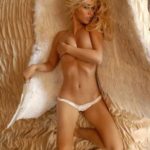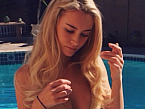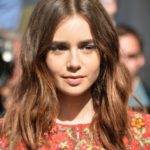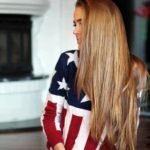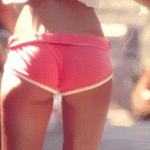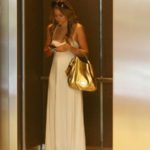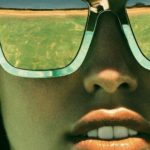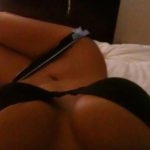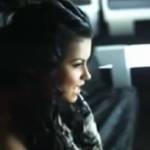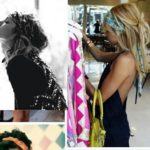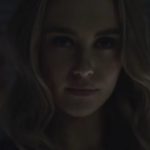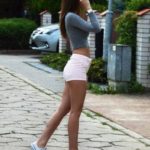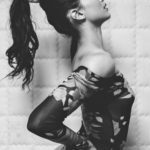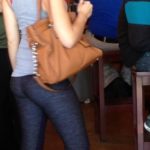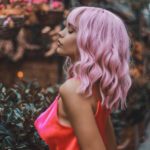what is actually beautiful vs. the chaos that Outlanders pretend is acceptable (with a focus on bilateral structures, proportion ratios, appealing contrasts, accentuating natural features, minimalism as opposed to layering, etc.)
–
Table of Contents:
- Introduction
- Vocabulary
- Progression
- What makes a body beautiful?
- What makes a nature-scene beautiful?
- What makes a home beautiful?
- What makes a painting or picture beautiful?
- Bilateral Structures
- Proportion Ratios
- Appealing Contrasts
- Accentuating Natural Features
- Minimalism as Opposed to Layering
- Why humans tried to redefine and misuse the term “beauty”:
- Example Images
–
Introduction:
Real beauty is on the outside, usually of a female; a healthy human girl or woman can be beautiful if she was formed with a vision agreeable to the High King (i.e. gestated, born, and raised with good looks; the kind of face and body he is attracted to). Feminine things can also be described as beautiful when they are agreeable to the High King.
- The Great Outdoors, also known as Mother Nature, because of that feminine nickname, can, at least away from urban sprawl, be described as beautiful.
- A home, for example, is typically associated with the beautiful loving wife who is there the most often, decorating it, making it a wonderful place to come back to after work each day.
- Artwork of a variety of types is often also considered beautiful, especially if it features healthy sexy female bodies or such female body-parts in it.
In this course, classes will focus on all the little details of what beauty actually is.
This course is not about attractive/fashionable clothing; that is covered in our Fashion course.
–
Vocabulary:
- bilateral structures
- proportion ratios
- appealing contrasts
- accentuating natural features
- minimalism as opposed to layering
–
Progression by Year:
- concepts/discussion
- Inisfree’s Law regarding this field; contraband, etc.
- examples brought in; visual aids
- identifying beautiful features of volunteering female students
- suggestions for how to fine-tune one’s own beauty; individuals brainstorming regarding themselves
- nature walks/hikes through Inisfree’s meadows and mountain trails, etc.
- field trips to various properties (all of which are well-maintained by ICVs and non-ICV residents alike in our realm)
- practicing applying gender-appropriate hairstyles; dozens for females, and dozens of different ones for males
- grooming; fingernail and toenail care, caring for eyebrows, etc.
- focus on how to accent homes’ interiors and exteriors
- focus on how to coordinate with neighbors so that decorations across/throughout the neighborhood complement each other
- practicing/preparing for the year-long outing coming up; how to maintain beauty/handsomeness in the field/wild
- Exodus
- restoring beauty/handsomeness after that year-long solo field-trip / meditative-expedition
- body language that accentuates in gender-appropriate ways; superman-pose for males, vs. kajira-poses for females, etc.
–more body-language ex’s: males maintaining sturdy and aimed stances, while females subtly aim a bit at an angle (accentuating their curves) and subtly rock/shift/sway - completing/perfecting each student’s appearance/exterior (if it wasn’t already); all females now fully beautiful, and all males fully handsome, as per the High King’s instinct/standard/vision/wisdom
We don’t go to art galleries/exhibits (which is something done during some classes/days of our Art course/s), or to our museum/s (something done during some classes/days of our History courses).
–
What makes a body beautiful?
sacred geometry’s subset/relative of proper/instinctive human/oid (elven/angelic) facial and whole-body symmetry, ratios, proportions, etc. is taught in this class, as well as how to focus one’s mind to adjust/manifest that
gender-appropriate hairstyles;
- always long (at least shoulder-length, and preferably pelvic-dimples length) for females (far easier to style in more ways when there is that much more hair)
- hair-buns only on females; no “man-buns”
- male hair braided only if in masculine way; not pigtails, etc.
- ponytail only high on female (though can also be low); always low on male
- ponytail only to the side on female; always centered on the back of head on male

–
What makes a nature-scene beautiful?
Most would say it is the kind of scenery they’d grown up associating with pleasant strolls/hikes, fresh/clean air, quiet/serene places, wide-open spaces, and so on.
Most regard bright-blue and barely-cloudy (spares white fluffy clouds) skies, snowcapped mountains, rolling hills, flowery meadows, clear babbling streams, single-canopy and double-canopy forests, and the smooth tan curves of sand dunes in deserts as beautiful.
Even though snow and deserts indicate environmental extremes that did not exist long ago, and mountains (and maybe all land) may be the ruins of what very ancient people once build on giant scales, to those who did not live through the cataclysms (or other major changes) that rendered those possible original megastructures how they look today… those things seem timeless, normal, and calming.
How are things naturally/normally on your world / in your realm? Do you regard those things as beautiful?
What would you regard as more natural/beautiful?
–
What makes a home beautiful?
Some will say it is the structural integrity and quality finishing/exterior of a house or other type of residence; does it look sturdy, and is it?
Some might focus on how cozy and tidy the home is on the inside.
Some might say it is how furnished and/or decorated the place is; whether it has framed photographs and artwork, etc..
Some have never had a home of their own, always being nomadic, for example, so maybe they don’t regard stationary living spaces as beautiful/ideal for them, or maybe they would cry with relief if ever they moved into their first.
Don’t confuse your emotional reaction to certain types of people, with what this question is asking; we are just helping you brainstorm what you naturally want in the building itself, not the social ‘atmosphere’ agreeable people in it can add to it. Remember: beauty is on the outside of a person (or, in this case, the outside of the framework of the home), and is generally feminine/soothing, vs. character which is the personality of a person.
For examples of what the High King considers to be beautiful, as far as homes go, take a look at any of the neighborhoods in our realm.
–
What makes a painting or picture beautiful?
An image doesn’t always have to be symmetrical or otherwise visually balanced to be appealing, but it does have to contain calming and arousing elements. For example, a photo of a sexy young woman is beautiful, but not if she is in a setting surrounded by ugly beings. To add even a single gross, misshapen, or otherwise undesirable object to anything viewable… immediately mars it, insulting whatever beautiful might have been in it, turning its whole potential only to bad.
–
Bilateral Structures:
Symmetry always appeals to stable, normal people. It only looks unsettling to unnatural beings, such as how many Outlander-humans became in the modern era, after their evil ways led to so many deformities that they started assuming no one was naturally perfectly symmetrical/balanced.
Every model’s face is bilateral/symmetrical; normal, healthy, etc.. We search for and choose those people because that is what we like to see, because we know on a deep/primal/timeless level that those features = natural, health, stability, a good life, etc..
Why is it that we seek bilateralism in animals/people, and usually in vehicles, but not always (if ever) in homes and other structures?
–
Proportion Ratios:
“Golden Ratio/s” and “Sacred Geometry” are terms you may have heard, and they are talking about naturally-occurring stable relationships with regard to lengths, angles, and other dimensions/measurements.
When something is proportional, its parts all make sense together.
For example, if a car’s wheels (what turns their tires) were too big, they wouldn’t fit in the wheel-wells, so we have a general idea what looks/is proportional, regarding that vehicle and that group of parts.
Extrapolating from that, we can start to picture the range of what would look ‘right’/normal and function best on people and other things.
Specific ratios (measurements/numbers) will be covered next, such as how body-part sizes should be (depth/’length’, height, and width) based on / relative to the given being’s total height.
–
Appealing Contrasts:
Just as we naturally tend to enjoy how bright the Sun/sky is compared to the ground/landscape, and dark hair on fair/light skin, or eye colors so strikingly different from the sclera (whites of the eyes), there are many other forms of contrast which appeal to most of us.
In lovemaking photos and videos, for example, inter-racial scenes/pairings are very popular, partially for this reason; because of the color scheme/contrast, not just the ‘steamy’/arousing taboo some may think of when seeing such art/interactions.
–
Accentuating Natural Features:
The human female figure is like a Coke bottle / hourglass, it can be said. To draw more attention to its natural curves, clothing with straight lines might be worn, for example, or articles which have holes for the shoulders, tits, hips, ass cheeks, etc., thus the high popularity of tank-tops, tube-tops, and cheekies / booty-shorts / boy-shorts.
On human males, the reverse works; since they have a more geometric (non-curvy) body/physique, doing something like attaching the kind of armor-domes/-discs Thor had on one of his uniforms/outfits can make their masculine features that much more prominent/noticeable.
Just keep in mind that anything male (outwardly; the outside of the masculine object) is described as handsome or not, not beautiful.
Again, however, all the details in this section/area are only addressed/covered in our Fashion course.
–
Minimalism as Opposed to Layering:
Inisfree is a nudist community/resort, and it was made by a man who had no choice but to learn to be very careful with a meager budget for a long time. That was one of the reasons he began learning about sustainability in many different fields/industries. Fast-forward to the dawn of our civilization, and it has become a big part of the culture here, specifically in this course: helping the good people who come to this realm understand that they don’t need anything other than their own healthy/fixed/perfect/ed bodies to be attractive.
Layering is fine in certain settings; multiple layers of cold-weather clothes can be very helpful, if not absolutely necessary,
and layers of primer and paint can help a coating to last much longer, etc.,
but when it comes to healthy human bodies, minimalism is almost always the way to go; healthy bodies get and stay healthy because of exercise, exposure to the great outdoors, and all that goes along with those things / that lifestyle.
Healthy bodies should always been proudly displayed, that they show what is possible, inspire others, and be that much easier to keep healthy/’alive’.
It is more beautiful for a healthy human female to have nothing on at all, including no paint on her face, than it is for the alternative. Unless she is dressing up for a themed event/venue, and dressing in a way which accentuates her natural feminine beauty/curves, she has little need for clothing or accessories at all.
“If it isn’t broken, don’t ‘fix’ it.” “If it works, don’t touch it.” When a female is naturally beautiful, don’t add things to it/her; let her be free, showing off her inherited or achieved great looks and moves.
–
Why humans tried to redefine and misuse the term “beauty”:
Every time humans tried to corrupt/divide people, they were themselves corrupted/divided. Every act/ion with ill-intent they took… little by little… worsened their forms/appearances. Eventually, over generations, this fragmented them into a truly lost and hideous species.
As creatures who always claim the polar-opposite of the truth, they then set about corrupting language/words. They taught people things that made no sense, such as by pretending that “real beauty is on the inside”, etc., even though they had neither; they were ugly and wrong, inside and out.
–
–
